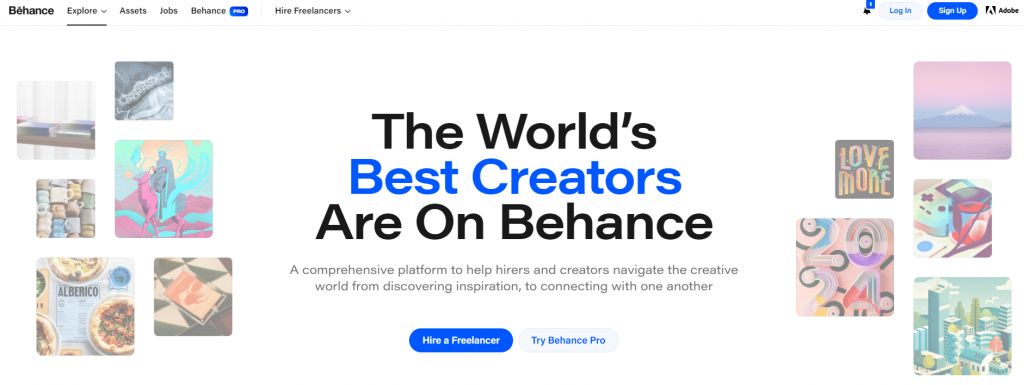A photography portfolio is more than just a collection of your best shots; it’s your visual resume, your personal brand, and often the first impression you make on potential clients. Whether you’re looking to attract new clients, apply for photography jobs, or simply share your work with the world, a well-organized portfolio is a must-have.
After 4 years of having photography as a hobby, I decided to create a portfolio for myself. While social media can be a great portfolio, having one outside of it ensures my work is seen freely outside a platform.
But how do you create a portfolio that not only showcases your talent but also resonates with your target audience? Let’s dive into the steps to make that happen.
Table of Contents
1. Understanding Your Target Audience

Before you start assembling your portfolio, it’s crucial to understand who you’re trying to reach. Are you targeting wedding clients, fashion brands, or editorial publications? Identifying your niche will help you tailor your portfolio to attract the right kind of attention.
Identifying Your Niche
Your niche is the specific area of photography that you specialize in or want to specialize in. Whether it’s portrait, landscape, fashion, or product photography, knowing your niche helps you curate a portfolio that highlights your strengths.
Tailoring Your Portfolio to Attract the Right Clients
Once you’ve identified your niche, focus on including work that appeals to your ideal clients. If you’re aiming to work with fashion brands, for example, your portfolio should showcase your best fashion photography, with a mix of editorial and commercial styles.
2. Choosing the Right Platform

The next step is deciding how you’ll present your portfolio. Will it be a physical book you can bring to client meetings, or an online gallery that’s accessible to anyone, anywhere?
Online vs. Physical Portfolios
While a physical portfolio can be impressive in face-to-face meetings, an online portfolio has a far broader reach. Online portfolios can be easily updated, shared, and accessed by potential clients from around the world.
Popular Portfolio Platforms
If you choose to go the online route, there are several platforms designed specifically for creatives. Websites like Behance, Squarespace, and Adobe Portfolio offer customizable templates that can help you create a professional-looking portfolio without needing to know how to code.
Selecting Your Best Work
Now that you have a platform in mind, it’s time to choose which images will make the cut. This is arguably the most critical part of building your portfolio.
Quality Over Quantity
It’s tempting to showcase everything, but less is more. Focus on quality rather than quantity. A smaller collection of your strongest work will leave a better impression than a large gallery with some weaker shots mixed in.
Curating a Cohesive Collection
Your portfolio should tell a story. Choose images that not only represent your best work but also fit together cohesively. Think about the flow from one image to the next and how they collectively represent your style.
3. Organizing Your Photography Portfolio
A well-organized portfolio is easy to navigate and makes a lasting impression. The way you arrange your work can significantly impact how it’s perceived.
Creating a Narrative with Your Images
Consider the story you want to tell with your portfolio. Organize your images in a way that creates a narrative, whether that’s chronological, thematic, or based on a particular style or project.
Categorizing by Genre or Style
If your work spans multiple genres, it may be helpful to create separate sections for each. This correspondingly makes it easier for potential clients to find what they’re interested in and allows you to showcase your versatility.
4. Writing Engaging Descriptions
While your images will be the star of the show, don’t underestimate the power of words. Descriptions can provide context, showcase your thought process, and give viewers a deeper understanding of your work.
The Power of Captions
A well-written caption can elevate an image by providing insight into the story behind it. Use captions to especially highlight what makes each photo unique or to share a brief anecdote about how it was captured.
How to Write Compelling Image Descriptions
Keep your descriptions concise but informative. Focus on what you want the viewer to notice, whether that’s the lighting, composition, or the emotions captured in the shot. Avoid technical jargon unless it adds value to the understanding of the image.
5. Showcasing Your Unique Style
Your portfolio is your chance to showcase what makes you unique as a photographer. Consistency in style helps potential clients understand your artistic vision. This explicitly shares what they can expect from working with you.
Highlighting Your Signature Look
If you have a particular style or technique that you’re known for, make sure it’s significantly featured in your portfolio. This could be a certain way you use light, your color grading, or the types of subjects you photograph. Furthermore, make it explicit by including sentences explaining why you stand out because of it.
Ensuring Consistency Across Your Portfolio
While it’s important to showcase a range of work, consistency in editing and presentation helps create a cohesive body of work. Ensure that all images align with your overall aesthetic and vision.
6. Incorporating Client Work and Testimonials
Including examples of client work and testimonials can add credibility to your portfolio and build trust with potential clients.
The Importance of Social Proof
Social proof, such as testimonials and case studies, can be a powerful tool in convincing potential clients of your skills. It markedly shows that others have trusted you with their projects and been satisfied with the results.
How to Integrate Client Feedback
Consider placing testimonials occasionally next to relevant images or creating a dedicated section for them. If you’ve worked on notable projects, highlight them with a brief description of the client’s needs and how you met them.
7. Creating an About Me Page
An “About Me” page is an opportunity to share your story and connect with your audience on a personal level. It’s where you can let your personality shine through.
Sharing Your Story
Use this space to talk about your journey as a photographer, your passion for the craft, and what inspires you. Be authentic—people are more likely to connect with you if they feel they know you.
Adding a Personal Touch
Consider including a photo of yourself, a short video introduction, or a list of fun facts to make your page more engaging. This is also a good place to mention any awards, exhibitions, or publications you’ve been featured in.
8. Including Contact Information
Your portfolio should make it as easy as possible for potential clients to get in touch with you. Don’t hide your contact information—make it prominent and accessible.
Making It Easy for Potential Clients to Reach You
Include a contact form, your email address, and links to your social media profiles. The easier it is for someone to reach out, the more likely they are to do so.
Best Practices for Contact Pages
Keep your contact page simple and straightforward. Include a call to action, encouraging visitors to reach out with inquiries or to discuss potential projects. If you’re comfortable, provide a phone number for direct communication.
9. Optimizing for SEO
Search engine optimization (SEO) is crucial for making your portfolio discoverable online. By optimizing your site, you can attract more organic traffic and reach a broader audience.
Using Keywords Effectively
Identify keywords that potential clients might use when searching for a photographer in your niche. Incorporate these keywords naturally into your website’s content, including image titles, descriptions, and your “About Me” page.
Enhancing Visibility on Search Engines
Other SEO strategies include optimizing your site’s load speed, using alt text for images, and ensuring your site is mobile-friendly. Unquestionably, the higher you rank on search engines, the more likely clients will find your portfolio.
10. Making Your Portfolio Mobile-Friendly
With so many people browsing on their phones, having a mobile-friendly portfolio is non-negotiable. Ensure your site looks good and functions well on all devices.
Importance of Responsive Design
A responsive design automatically adjusts the layout of your portfolio to suit different screen sizes. This ensures that your portfolio is accessible and visually appealing, whether viewed on a smartphone, tablet, or desktop.
Testing Across Devices
Before launching your portfolio, test it on various devices to check for any issues with loading times, navigation, or image quality. A smooth user experience on all devices can make a big difference in how your work is perceived.
11. Regularly Updating Your Portfolio
Your portfolio should evolve with your work. Regular updates keep it fresh and relevant, showing potential clients that you’re active and continuously producing new work.
Keeping Your Work Fresh
Set a schedule for reviewing and updating your portfolio, whether that’s quarterly, biannually, or after completing significant projects. Replace older work with newer, better examples to reflect your current skill level.
When to Add or Remove Content
Not every project needs to be in your portfolio. Be selective—only include work that aligns with your goals and showcases your best skills. Don’t be afraid to remove older or weaker work that undeniably no longer represents your abilities.
12. Promoting Your Portfolio
Once your portfolio is complete, the next step is promoting it. There’s no point in having a great portfolio if no one sees it!
Using Social Media to Drive Traffic
Share your portfolio on your social media profiles, and encourage your followers to check it out. Regularly post updates, new projects, or behind-the-scenes content whenever to keep your audience engaged.
Networking and Word-of-Mouth
Finally, don’t underestimate the power of networking. Attend industry events, collaborate with other creatives, and ask satisfied clients to refer you to others. Word-of-mouth can be incredibly effective in attracting new business.
Conclusion
Creating a photography portfolio is a journey that involves careful curation, consistent updating, and strategic promotion. By understanding your audience, choosing the right platform, showcasing your best work, and optimizing for SEO, you can build a portfolio that not only showcases your talent but also attracts the right clients. Remember, your portfolio is a reflection of you as an artist, so take the time to make it truly shine.
About the Author
Hi, I’m Mark – an amateur photographer that first started in 2020. I particularly capture action figures in miniature settings and dioramas. You can follow more of my work at the following social media channels:
- Instagram – iselandmarkventures
- Facebook – iselandmarkventures
- YouTube – The Iselandmarkventures

